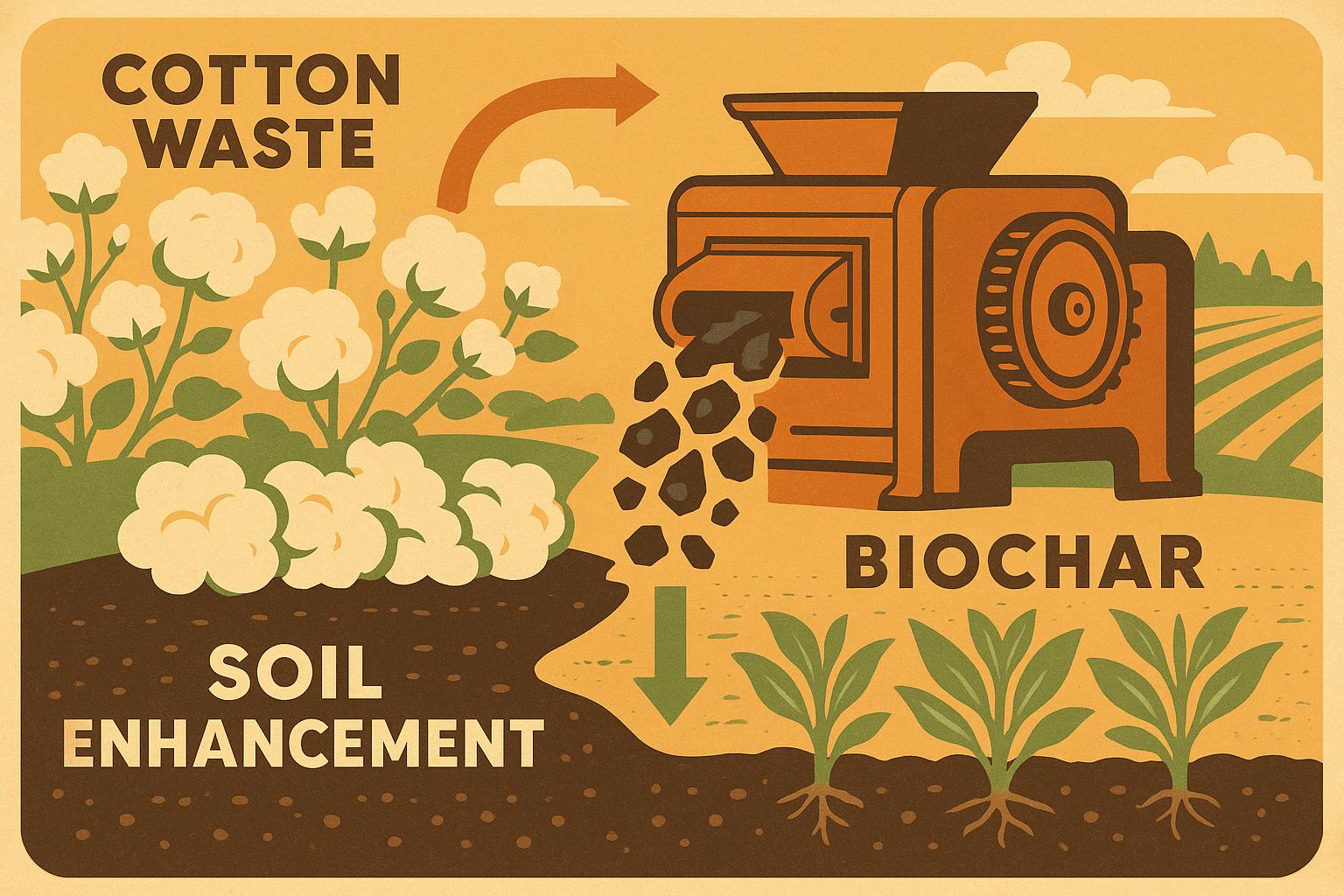Executive Summary (TL;DR)
- Advanced cotton crop management integrates cutting-edge digital tools with sustainable practices to boost efficiency and yields.
- Key innovations include variable-rate irrigation, drone surveillance, soil moisture sensing, and precision planting technologies.
- Combining these tools with regenerative and conservation agriculture principles ensures profitability and environmental stewardship.
Related Post: For a detailed look at cotton sustainability, visit The Positive Environmental Role of Cotton Farming and Why It's Better Than Plastic Alternatives.
Understanding Advanced Cotton Crop Management
Today's advanced cotton crop management transcends traditional practices by marrying digital innovation with sustainability principles. The goal is to optimize agricultural inputs while maintaining or improving yield and fiber quality. These approaches equip seasoned cotton farmers with precise data and tools to make informed decisions across planting, irrigation, pest control, and nutrient management.
The foundation lies in technology: GPS-guided farm machinery, drones offering multispectral crop imaging, soil moisture and nutrient sensors, and advanced data analytics. These innovations allow growers to manage variability within fields, targeting specific needs rather than treating all acres uniformly.
Equally important is the integration of sustainable agronomic practices, including conservation tillage, cover cropping, and crop rotation, which enhance soil health and long-term productivity without compromising yields.
Key Digital Innovations in Cotton Crop Management
Variable-Rate Irrigation and Soil Moisture Probes
Variable-rate irrigation software adapts watering schedules dynamically based on soil moisture readings from advanced probes buried at multiple depths across fields. This technology conserves water in drier zones while delivering sufficient hydration where required, crucial in water-scarce cotton regions.
Precision Planting and Seed Spacing
Modern planting equipment combined with guidance systems ensures ideal planting depth and uniform row spacing. Variable rate seeders adjust seeding density according to soil fertility zones, avoiding waste and overcrowding. Such precision optimizes plant population and boll development.
Drone Surveillance and On-Demand Scouting
Drones equipped with multispectral and thermal cameras enable frequent, high-resolution monitoring of crop health, early detection of pest or disease outbreaks, and assessment of plant stress from drought or nutrient deficiency. These insights facilitate timely, localized interventions that save inputs and protect yields.
Advanced Pest and Weed Management
See & Spray technology and other targeted application tools identify weeds or pests at the pixel level, allowing herbicides and pesticides to be applied selectively rather than broadcast sprayed. This innovation reduces chemical use by up to 77% and protects beneficial organisms.
Sustainable Practices Enhancing Advanced Management
Conservation Tillage and Crop Rotation
Minimizing tillage conserves soil structure, reduces erosion, and facilitates moisture retention, while crop rotation breaks pest and disease cycles improving soil health. Regenerative principles applied in cotton farming boost organic matter and nutrient cycling.
Cover Cropping
Planting cover crops in fallow periods enriches soil nitrogen and improves carbon sequestration, while reducing weed pressures. Multi-species cover crops are especially effective in diversifying soil biology and enhancing resilience.
Integrated Pest Management (IPM)
IPM uses biological controls, habitat management, and selective chemical treatments informed by scouting data, reducing pesticide reliance with sustained effectiveness.
Implementation Strategies for Seasoned Farmers
- Start with Soil and Yield Mapping: Use GPS tech to assess field variability and define management zones.
- Adopt Incremental Tech: Introduce variable-rate irrigation or drone scouting stepwise.
- Integrate Sustainability: Combine tech with cover cropping, conservation tillage, and crop rotations.
- Data-Driven Decisions: Leverage analytics platforms integrating sensor and imaging data to tailor input applications.
- Continuous Refinement: Analyze yield and input data post-season to refine prescriptions.
Partner with extension services or agronomists familiar with local conditions and advanced technologies to optimize adoption and maximize ROI.
Challenges and Solutions
- Cost of Technologies: Offset initial expense through phased adoption, ROI tracking, and leveraging grants or subsidies.
- Data Management: Simplify with user-friendly platforms offering actionable insights, not just raw data.
- Training Needs: Engage in workshops and industry groups focused on advanced ag tech adoption.
The Road Ahead: Innovation and Sustainability Synergy
As AI algorithms improve, expect even finer scale recommendations spanning gene-to-field integration, autonomous machinery reducing labor needs, and blockchain enhancing transparency in sustainable cotton supply chains. These advancements promise more profitable and environmentally sound cotton production.
Takeaway Points
- Prioritize water management with variable-rate irrigation and moisture sensors.
- Use drones for frequent crop health checks and targeted crop protection.
- Incorporate cover crops and conservation tillage to boost soil health.
- Leverage data analytics for precise and cost-effective input applications.
- Plan incremental technology adoption aligned with sustainability goals.
Advanced cotton crop management combines digital innovation with sustainable farming practices, providing seasoned cotton professionals the tools to optimize yield, reduce inputs, and safeguard their land for future generations. This integrative approach positions cotton farms for long-term success in a competitive, environmentally conscious market.


